Embark on a High-Performance Virtual Learning Journey with Us!

Our virtual leadership training courses ensure that your learning journey continues, even in these trying times.
The entire world has been facing difficult challenges in the past months—vastly changing the global business landscape and redefining organisational dynamics as we know it. With the prevailing health crisis, disruptive innovation has taken on a new meaning across all aspects of life, ushering in the advent of what’s now being called the new normal.
However, with an increasingly dispersed workforce, how can you ensure the continuance of your organisation’s learning? How can you sustain learning engagement across your teams in the absence of face-to-face interactions? How can you optimise the downtime, especially at this period of quarantine? And when staying home, and safe, is an imperative?
Embarking on Kaleidoskope’s virtual leadership learning journeys is a viable and effective approach. Our online delivery system allows you to leverage, streamline, and optimise knowledge-transfer within your organisation, so learning doesn’t need to stop. We continue to equip you and your organisation with the tools for your learning and development needs.
Make our virtual learning journeys a part of your growth-enabling resource in enhancing your leadership learning experience today.
Online Learning as an Alternative to Training Workshops
In the current environment, the organisation is probably de-centralised, and many working from different parts of the world. Communicating learning engagement becomes much more of a challenge. Enhanced travel constraints may have perhaps hindered learning plans, and opportunities. Face-to-face workshops are currently improbable, and there’s no telling when this situation will be reversed.
Fortunately, virtual training platforms don’t require the additional time or expenses of travel, and can be accessed at a time and place that’s convenient for you. They enable your team members to connect directly, regardless of location—a benefit that you can reap long after the mandatory lockdown has been lifted.
Moreover, studies show that online learning platforms are effective in promoting interaction because of the pseudo-anonymity it affords the participants. People who feel too shy to participate in face-to-face group dynamics may now find the courage, given the comfort zone that a virtual environment provides.
At Kaleidoskope, our online learning tools are designed to sustainably support the learning journey with frequent check-ins, supporting, accompanying and engaging learners. Because there are no venue constraints, it’s now easier for participants to reconvene more often, thereby supporting more effective peer-to-peer, facilitator-led learning and interaction.
Safeguarding Your Systems’ Security
System security is naturally a top-of-mind concern for organisations right now, especially with the increased breaches on various platforms that have come to light in recent months. This is why creating a secure space for online learning sessions is our priority at Kaleidoskope.
All our virtual learning journeys are designed to be compatible with your own system requirements and IT security protocols. In fact, our virtual training platforms have effectively, and successfully supported an extensive client base, without compromising IT security systems.
Tangible Takeaways from a Virtual Learning Journey
Our virtual workshops are short and succinct, sharply focused on disseminating useful information on a wide range of topics that range from leadership skills to effective approaches to management, or simply staying mentally healthy in these times.
Our online learning sessions provide access to a virtual venue for creating dialogues, reflections, and sharing ideas. To keep our participants engaged, we have incorporated a wide variety of interactive activities into our online sessions, including break-out group discussions, presentations, quizzes and polls.
Graphs, infographics, and other visual aids are frequently referenced in our workshops.
Even e-learning beginners and noobs can reap the many and immediate benefits of our virtual learning journey, as it’s tailored and designed on an interface that’s instinctive and easy to navigate.
Virtual Learning Journey Sessions
Just to get you started, we are introducing a series of leadership learning and skill-building sessions.
- Stress Alarms Buttons: where are your stres buttons, and what happens in the brain when you’re stressed!
- #HappinessHacks: what does happiness at work and in life look like, and how can we cultivate happiness?
- Time and Priority Management: how to streamline your work and maximise your productivity.
- Managing Up: techniques to improve your working relationships with your supervisors and managers.
- Influencing Skills: how to impel others to support your ideas without wielding authority.
- Giving Constructive Feedback: strategies to using feedback in achieving results
- Effective Meetings: making online meetings more engaging, and correcting bad meeting habits.
- Being Assertive: how to get your ideas across by being open, honest, and directJust to get you started, we are introducing a series of leadership learning and skill-building sessions.
With our virtual learning journeys, there’s no reason to stop learning.
At Kaleidoskope, we are committed to delivering innovative and sustainable learning opportunities, and to continue to support you as a learning partner through these extraordinary times and beyond.
Our virtual learning sessions are facilitated by seasoned trainers, backed by many years of corporate leadership experience and expertise.
Learn more about Kaleidoskope’s trainers and find out what it takes to be a leader of learners
Get in touch with us today for details on our virtual learning initiatives that are most relevant to you or your organisation’s needs.
Leadership Training
- Business Storytelling – A Critical Skill For Great Leadership
- Want to make history as a leader? Try studying these great leaders from history
- Solution Focused Leadership Coaching
- Leading the Way for Leaders: How Your Leadership Can Continue to Evolve
- How to Manage a High-Performance Team Made Up of Different Personalities
- Have You Mastered the 4 Leadership Fundamentals?
- Do You Practise Adaptive Leadership? Your Organisation Needs You To
- Why A Good Leader Needs To Understand Business Agility
- 20 Qualities of a Good Leader in Times of Change (A Checklist)
Corporate Training
- Why is your training, boring?
- Learning Initiatives at Work CAN Lead to A Great ROI. Here’s How
- Corporate Training Doesn’t Seem to Be Working? You Need an HPLJ Approach!
Facilitation Training
- Facilitate a High Impact Training Course with Accelerated Learning
- Accelerative Learning – A Better Return on Training Investment (Part 1)
- Accelerative Learning – A Better Return on Training Investment (Part 2)
- Accelerative Learning – A Better Return on Training Investment (Part 3)
Virtual Learning
Start Your High-Performance Learning Journey
WITH KALEIDOSKOPE NOW!
As we step closer into the Year of the Rat, let’s take a scamper through history and have a quick glance at what are some of the examples, or lessons people born under the Chinese zodiac sign of the Rat can teach us about leadership.
Lessons from Leaders Born in the Year of the Rat

As we step closer into the Year of the Rat, let’s take a scamper through history and have a quick glance at what are some of the examples, or lessons people born under the Chinese zodiac sign of the Rat can teach us about leadership.
A lot, it seems, because if the stars are to be believed, Rats are destined for success, especially in business and politics.
The Rat personality is resourceful, versatile, and sharp. Rat people are among the zodiac’s most hardworking and ambitious. They are imbued with boundless energy and distinctly focused on personal goals.
Their innate attention to detail and organisational talents make them effective leaders. Perfectionists that they are, Rats, as managers, are seldom easy to please. However, since they impose the same high standards on themselves, they earn the respect and loyalty of others easily.
In the spirit of the Chinese New Year, we’ve picked some notable personalities that embody the propensity for leadership and success of those born in the Year of the Rat. Whether or not you share this sign, chew on this, or ask us what we can do for you.
Galileo Galilei
15 February 1564—8 January 1642

“All truths are easy to understand once they are discovered; the point is to discover them.”
His single-mindedness in pursuing knowledge has made Galileo an icon of instructional leadership, which is characterised by “an intense moral purpose focused on promoting deep student learning, professional inquiry, trusting relationships, and seeking evidence in action,” according to professor and author Helen Timperley.
In the millennia before Galileo’s time, Geocentrism was central to people’s belief. The Earth was the centre of the universe around which all heavenly bodies revolve.
This theory was taken as fact and fully supported by the Catholic Church. When Galileo supported, and was able to show proof of an alternative view, he was summoned, and subjected to the Roman Inquisition. He was declared a heretic for disputing the Holy Scriptures. Under duress, Galileo stopped teaching his theory but, 300 years later, the Church admitted he was right all along.
What if Galileo had learnt about managing conflict, he would acquired valuable insights on conflict awareness, balancing between pull and pushing strategies, and harnessing the power of emotional intelligence to conflict resolution. Perhaps Galileo could’ve been saved from the Church-imposed house arrest he had to endure for many years until his death.
Jorge Mario Bergoglio
17 December 1936—present

“There is a need for financial reform along ethical lines that would produce in its turn an economic reform to benefit everyone. This would nevertheless require a courageous change of attitude on the part of political leaders.”
Since he was elected Pontiff in March 2013, Jorge Bergoglio has been defying the world’s pre-conceived notions of the papacy. Pope Francis first broke convention by appearing on the balcony of Saint Peter’s Basilica in a white cassock instead of the more elaborate ceremonial vestments.
That was a start that would mark his papacy. The 266th head of the Roman Catholic Church adopts a transformative approach to leadership.
And a significant part of his tenure was the restructuring of the Vatican’s financial system, with the objective to create a more open and transparent financial environment.
Pope Francis’ continued to adopt a leading through change approach, leading the Catholic Church in a world of accelerating change, volatility and ambiguity. His tenure was characterized by humility, outspoken support of the world’s poor and marginalized, and also a new and active involvement in the areas of political diplomacy and environmental advocacy.
He was also focused on ensuring that the Church is more accessible, more welcoming and relevant in the changing times.
William Shakespeare
26 April 1564—23 April 1616

“Let none presume to wear an undeserved dignity. O that estates, degrees, and offices were not derived corruptly, and that clear honour were purchased by the merit of the wearer!” —from The Merchant of Venice
William Shakespeare is arguably the greatest writer in the English language. A playwright, a poet, and a dramatist, he wrote at least 38 plays, 154 sonnets, and several poems. By and large, his works are among the gold standards for creative writing.
Shakespeare died at age 52, but his legacy lives till today. What is now “standard English” is owed largely to Samuel Johnson’s A Dictionary of the English Language published in the 18th century, in which Shakespeare’s works were among the main sources.
Shakespeare certainly had a lot of insights into leadership. Whether it is the ambitious and amoral Macbeth, the indecisive Hamlet, or King Lear who failed to watch out for yes men (and women), there is no lack of leadership lessons we can draw from his works.
Between writing, producing, and even playing major roles in his own plays, Shakespeare would have found our workshop on managing time and priorities very useful. Perhaps he may even have churned out more works for our enjoyment today!
Sundar Pichai
10 July 1972—present

“As a leader, it is important to not just see your own success, but focus on the success of others.”
At least 300 million people have Google Chrome as their main browser, and more than 800 million actively use Google Drive. At the helm of developing these products, as well as other Google software, is Sundar Pichai—current CEO of Alphabet and Google LLC.
This Gen-Xer born in the Year of the Rat founded his career on engineering and product management, which eventually led him to join Google in 2004. There, he led the development of the company’s suite of applications, including Chrome OS, Gmail, Google Maps, the VP8 video codec, and WebM.
Pichai is an innovator and an astute strategist whose management style is credited for pushing Alphabet into the trillion-dollar club just recently. He practices what he preaches, living by his leadership mantra “to not only see his own success, but to focus on the success of others”. HIs people-centric style is all about building his team to be the best versions of themselves.
Building high performing teams, coaching team members to be high performing individuals, and motivating them to be successful – precisely what our programme on leading and managing teams is all about. The workshop is focused on teaching leaders or managers to create high performing teams through building, coaching and motivating individual team members together to get behind organisational goals.
Shirley Chisholm
30 November 1924—1 January 2005
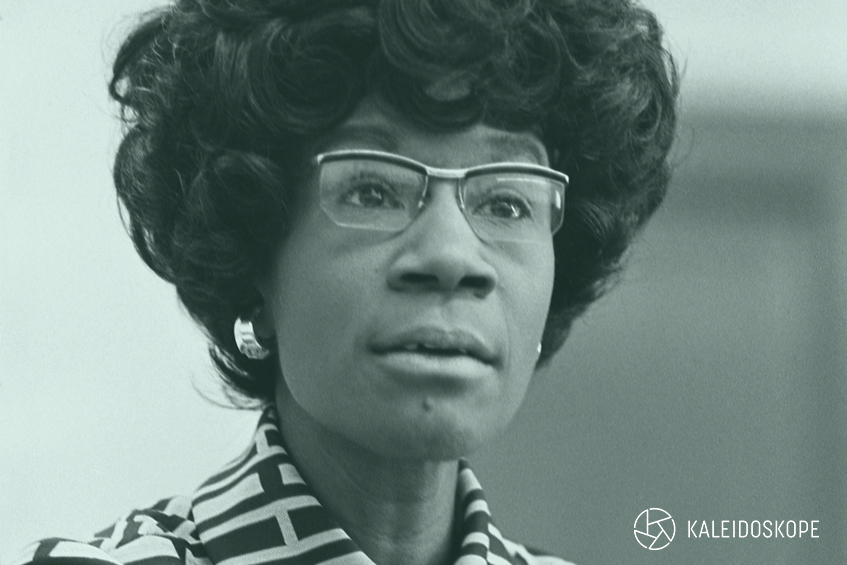
“Women in this country must become revolutionaries. We must refuse to accept the old, the traditional roles, and stereotypes.”
Women born in the Year of the Rat tend to be traditional and more family-oriented, according to the Chinese zodiac. But if she were alive today, Shirley Chisholm would be the first to object. Chisholm was the first woman and the first African-American woman to run for US president.
In 1950s America, when conformity with traditional gender roles was the norm, Chisholm was already a recognised authority on child welfare and early education. In 1968, she became the first black woman elected into US Congress, representing the 12th District of New York for seven terms.
In the context of the prevailing culture of conservatism that Chisolm had to work with, she has clearly demonstrated the effective influencing strategies outlined in our programme. Chisholm ran for president in 1972 under the Democratic Party, becoming the first woman to participate in a presidential debate. She was both a transformational and democratic leader—breaking female stereotypes and fighting racism. Throughout her political career, Chisholm worked to raise the national budget on social services, especially on education and health care.
Although the world has changed a lot since the 1950s, leaders and managers today will still find our approach to driving through unpopular, foreign ideas, or policies very relevant.
Fate Vs. Fortitude
In explaining leadership in terms of nature versus nurture, experts often refer to two opposing theories. Great Man theory proposes that leaders are born, not made; some people have genetic capabilities that make them excel in their field. Conversely, behavioural theorists say that becoming a leader requires keen observation and learning, training and practice.
In our current world of disruptive transformation, continuous improvement and constant innovation are key to keeping abreast of rapidly developing technologies. While one cannot discount the age-old wisdom behind the Chinese zodiac, we at Kaleidoskope believe that success is dependent on a person’s willingness to better themselves.
Do you have what it takes to be a leader?
As Nobel Prize-winning philosopher Albert Camus said, “Life is the sum of all our choices.” So, if you’re ready to become an effective leader in the face of rapidly changing organisational landscapes, ask us, and we’ll send you scurrying off on your journey to high-performance learning.
Leadership Training
- Business Storytelling – A Critical Skill For Great Leadership
- Want to make history as a leader? Try studying these great leaders from history
- Solution Focused Leadership Coaching
- Leading the Way for Leaders: How Your Leadership Can Continue to Evolve
- How to Manage a High-Performance Team Made Up of Different Personalities
- Have You Mastered the 4 Leadership Fundamentals?
- Do You Practise Adaptive Leadership? Your Organisation Needs You To
- Why A Good Leader Needs To Understand Business Agility
- 20 Qualities of a Good Leader in Times of Change (A Checklist)
Corporate Training
- Why is your training, boring?
- Learning Initiatives at Work CAN Lead to A Great ROI. Here’s How
- Corporate Training Doesn’t Seem to Be Working? You Need an HPLJ Approach!
Facilitation Training
- Facilitate a High Impact Training Course with Accelerated Learning
- Accelerative Learning – A Better Return on Training Investment (Part 1)
- Accelerative Learning – A Better Return on Training Investment (Part 2)
- Accelerative Learning – A Better Return on Training Investment (Part 3)
Virtual Learning
Start Your High-Performance Learning Journey
WITH KALEIDOSKOPE NOW!
Wouldn’t it be nice if everyone who sat through your training sessions actually remembered your training? Thing is, what people are supposed to learn during training often isn’t just “nice-to-have”, but in some cases, literally a matter of life or death
Not Just “Nice”, But Necessary: Why Accelerated Learning is A Must Across Industries

Wouldn’t it be nice if everyone who sat through your training sessions actually remembered your training? Thing is, what people are supposed to learn during training often isn’t just “nice-to-have”, but in some cases, literally a matter of life or death.
We’re not merely discussing training involving high-risk dangerous chemicals, hazardous minerals, or heavy equipment. When you train your staff to do any sort of work, everyone is affected—from the leadership to the chap in the backroom, from the customer-facing team to your customers, themselves. And that could literally mean life or death, or existence of your organisation.
Accelerated Learning or AL is an approach to learning that ensures that people actually learn what they’re supposed to at every training session.
Now, we’re not just talking about being able to parrot back what a trainer says—AL is all about high-impact, high-engagement and results-focused learning that ensures trainees remember what they learn, and apply what they learned when they leave the classroom. And that’s something that applies to any industry, including yours.
To better appreciate the vital difference Accelerated Learning can make in specific industries, let’s take a closer look at AL at work in training for some industries.
AL Enhances Compliance Comprehension
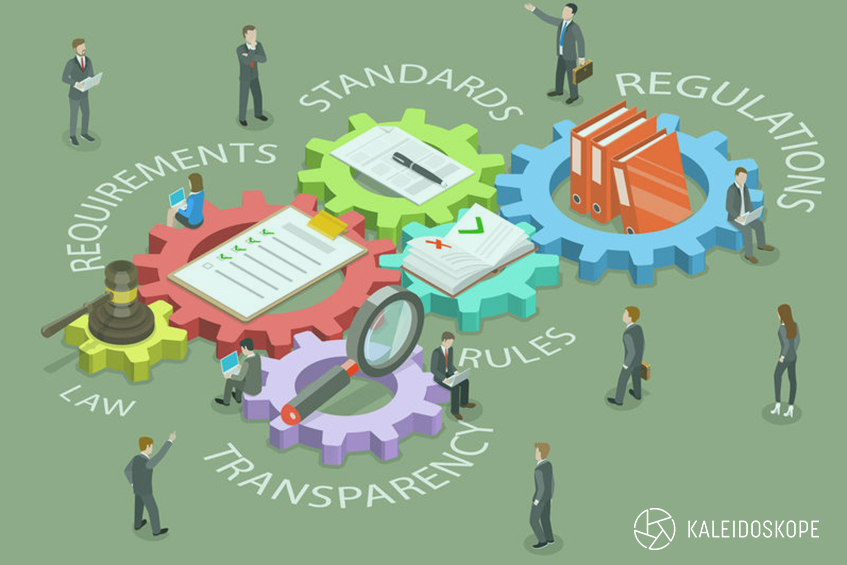
Compliance focuses on making sure that an organisation’s processes are in line with regulations—its own as well as the governing authority. Companies in every industry, in every country, have regulations they need to comply with. This is very typical in some highly regulated industries, like finance or healthcare.
Compliance training generally involves bringing teams up to speed not just with the legal aspects of their company’s operations, but also with the company’s own policies covering standards, conduct, security and ethical issues. In some cases, Compliance training is a critical part of an organisation’s international certification bodies, such as the ISO or TUV.
A key part of Accelerated Learning is its emphasis on connecting trainees to the learning and requiring them “teach back” what they’ve learned, AL in Compliance Training enhances the trainees’ understanding and application of Compliance in their individual roles.
Naturally, now that there is a connection, it effectively improves the way Compliance is observed during the trainees’ day-to-day.
AL has its roots in the Oil and Gas industry

Evolving environmental compliance regulations, high stakes, high-risk investments, and expansion into new markets, constant innovations in engineering and technology are all a part of the volatile oil and gas industry. AL was born in the oil and gas industry, because of the need to provide effective, efficacious and continual training for teams to ensure not just Compliance but Occupational Safety.
The BP Deepwater Horizon oil spill incident is a prime demonstration of the immense, and tremendous implications of a mistake, an error in this industry. An oil spill because someone was careless when operating the safety system, the rig operator made a mistake, or a foreman missed a step in the safety practices. Just the devastating environmental impact already meant more than 8000 species of living things were affected, and its impact
Accelerated Learning is a critical approach to training in the oil and gas industry, and is an integral approach that is widely adopted in technical, and safety trainings.
Michael Killingsworth first brought AL to American Airlines. Having achieved significant business results, he moved to the Royal Dutch Shell to develop their learning strategy in 2002, eventually become VP of Learning and Organizational Effectiveness.
AL has been embedded into the design and delivery of Shell’s safety learning processes ever since. The company has now trained hundreds of safety professionals in AL and high impact facilitation around the world and has become a benchmark for safety across the industry.
“Death by Powerpoint” can be literal

On 26 April 2016, a delivery of 1.5 tons of steel mesh makes its way to a construction yard in Singapore. The load needs to be lifted from the truck using the truck crane and lowered to the ground. Two workers rig up the load which starts to buckle as it comes down. One of the workers reaches up to straighten it, putting himself in the line of fire. The corroded lifting chain fails and the load gives way, crushes him to death. The workers didn’t know how to lift safely.
When we talk about “Death by Powerpoint”, we snigger and generally compare notes on how boring the training sessions were. In construction safety, however, “Death by Powerpoint” can be literal.
Imagine a team of folks struggling to stay awake as a presenter puts them through several hours of slides on rigging and lifting, confined space entry, chemical management, working at height etc, etc.
The next day they are in the field entering a tank …and if they cannot remember their training from the previous day, the results can be fatal.
That is why the Accelerated Learning is a key part of the training approach where training isn’t just a must, but are often repeated at regular intervals, so trainees not only need to learn and apply but also need to be constantly, and consistently reiterated.
AL uses physical activities, creativity, colour, images, creating a training environment that fully involves the learners in their own learning experience. Tapping into our innate potential for learning in a way that traditional learning methods cannot, AL is an obvious and powerful learning approach for safety.
Reinforcing Training in Finance with AL?

It may not be so obvious that AL can be applied to money management. However, in recent years, financial and political scandals, compliance and ethical issues have dominated many headlines globally.
A recent and ongoing political scandal involving more than USD700m, a political leader, several global banks, a complicated, and tangled web weaved from compliance failures, ethical obligations, transparency and illegal dealings have further raised questions, and shifted the spotlight yet again on the importance of compliance functions in the international financial sector.
Financial training initiatives typically cover a range of regulated Compliance training, with emphasis on ethics, recognising red flags on money laundering, client verification or risk assessment. These trainings are typically required by regulatory authorities to be repeated, refreshed and reiterated.
The subject matter is very technical, often repetitive, and more often than not, guilty of “Death by Powerpoint”.
AL is a very effective tool, and skill to empower Compliance trainers with.
AL is learner-drive, activity-based, and can be easily embedded into the delivery of very technical compliance programmes. Content can be adopted, and adapted to be “learner-driven”, engaging, and highly interactive, and overall, to create a learning programme that is simulating, applicable, and that significantly improves memory and retention.
Discover how AL can make a lifesaving difference in your organisation’s performance.
No matter what industry you’re in, or how insignificant it may seem, the work you do touches lives and changes them. Whether that change is for good or ill might well depend on how well you train everyone on your team. Why wait for the unthinkable, or unforeseen to drive that point home? The next avoidable incident or accident could happen to one of your own—staff, stakeholders, or customers.
Our trainers at Kaleidoskope have spent more than 20 years helping teams as well as the trainers who train them to enhance their professional facilitation expertise. David Turberfield, the lead facilitator for our AL course, is a certified Acclerated Learning Facilitator with 25 years of experience as a high-impact facilitator, professional coach and speaker primarily in Asia.
Get in touch with us to give your training initiatives the Accelerated Learning advantage, today.
Leadership Training
- Business Storytelling – A Critical Skill For Great Leadership
- Want to make history as a leader? Try studying these great leaders from history
- Solution Focused Leadership Coaching
- Leading the Way for Leaders: How Your Leadership Can Continue to Evolve
- How to Manage a High-Performance Team Made Up of Different Personalities
- Have You Mastered the 4 Leadership Fundamentals?
- Do You Practise Adaptive Leadership? Your Organisation Needs You To
- Why A Good Leader Needs To Understand Business Agility
- 20 Qualities of a Good Leader in Times of Change (A Checklist)
Corporate Training
- Why is your training, boring?
- Learning Initiatives at Work CAN Lead to A Great ROI. Here’s How
- Corporate Training Doesn’t Seem to Be Working? You Need an HPLJ Approach!
Facilitation Training
- Facilitate a High Impact Training Course with Accelerated Learning
- Accelerative Learning – A Better Return on Training Investment (Part 1)
- Accelerative Learning – A Better Return on Training Investment (Part 2)
- Accelerative Learning – A Better Return on Training Investment (Part 3)
Virtual Learning
Start Your High-Performance Learning Journey
WITH KALEIDOSKOPE NOW!
Leadership Embodiment – The art of grit and grace to influence

Leadership. This space can give us a bump or a boost. It can put us in a concerned corner or an exuberant expanse – flight, fight, freeze, flurry, fierce or force.
It is the “Power” that comes into play in our very human, and subconscious field. The kind of relationship we have with this power determines what kind of a leader we show up in that space.
Power is energy. We have capacities to shift, express, expand and share. Once we can recognize how to work with it, power becomes a familiarity that we can mindfully and certainly practice. Life with leadership would be an easier place to embrace.
What energy are you, or your leaders emanating? Especially when leaders have to meet business’s speed, exacting demands, increasing complexity and escalating uncertainties.
Shifting the focus
“Change occurs when one becomes what he is, not when he tries to become what he is not,” says Arnold R Beiser.
It is often not what you “try to do” to lead. What matters more is “who you are” as you broadcast your personal leadership energy and presence, gaining the trust, faith and confidence of your team.
You may recall sometimes how you or someone says, “Oh, I like his energy!” or “She has great presence. Very powerful.”
When you can shift the lens of your leadership attention – from seeing it beyond skill sets that need to develop through external (efforts) to seeing it as the internal energy that you already have and already are (effortless). It is a different personal developmental view. You can begin to see power as your inner resource that you can tap into and call it out to dance with the situation.
Energy has current and fluidity.
Broadcasting leadership presence
“Presence influences the room. Which room? The room you are in,” says Jess Tansutat, Leadership Embodiment associate trainer in Asia.
Leaders with presence can hold a space, navigate conversations and manage relationships skillfully. Presence can be expanded, stretched, shrunk or collapsed.
In today’s busy work environments, it doesn’t take much to get pushed over the cliff. We feel faster than we think. We react much faster than we think. We are at the mercy of our emotions. We have to deal with team members, business targets, organisational objectives, personal challenges. Even the smartest most visionary leaders, once triggered, can lose their stands and get reactive. When leaders do that, they feel separated. Their teams feel separated, and are sometimes broken. Power and trust in shared space and common ground are reduced.
It is a mechanism. A leader’s emotions, expression, discernment and language impact, and affect team outcomes. When emotions and defenses are stirred up in situations, they have a negative impact on a leader’s presence, draining his energy and limit his effectiveness.
What would you do to reduce the energy drain on your leadership effectiveness?
Bridging the gap with self-regulation
Leadership requires intrapersonal, interpersonal and group competencies, as well as self-awareness, emotional self-control and relationship management.
As the old saying goes, “Just because it’s common sense, doesn’t mean it’s common practice.” Under pressure, we are even more likely to forget even the most basic things.
Self-regulation helps the body’s nervous chemicals and e-motions (energy in motion) to calm down and bring leaders back to the state of presence so they can make difficult decisions, and manage conversations and conflicts in a more expansive way. Self-regulation is a core practice in the Leadership Embodiment model developed by Wendy Palmer, co-author of Leadership Embodiment: How the way we sit and stand can change the way we think and speak.
Leadership Embodiment approach
The principle of Leadership Embodiment addresses the role of the body in leading effectively. It sees our body as a place to contact our internal resources for self-management so we can process our emotional response and recover from our physiological stress patterns that affects our leadership presence. This is a body-oriented learning process of leadership, beyond the rational mind.
As with many of the other schools of embodiment, it developed out of the combination of the Japanese martial art, Aikido, and mindfulness. The model has been refined for use in business and the performance context of an organization. It works with awareness and focus, and the ability to influence one’s state of being with ease.
The core of the practice is to recognize being in a stressful state and swiftly self-regulate into a flow-state.
As Leadership Embodiment co-author Janet Crawford says, “Most of what we do is neither conscious nor volitional. Until we become aware of what drives us, be it thoughts, emotions, or body dispositions, we are powerless to change. The body takes a shape before the mind consciously identifies a thought or feeling. Our physical being is the most direct point of intervention. How you sit and stand will change the way you think and speak.”
Leadership Embodiment shares an alternative and practical perspective to develop leaders to be in a constant state of power and presence, dancing between grit and grace. Strength and gentleness. Will and kindness.
Grit: Capacity to “take”
This is resilience. Will becomes a source of power, firmness and ability to persevere in the face of challenges. A leader with grit will show capacity to take up a space, taking on responsibility for their words, and actions, taking it on personally and acting on behalf of those he cares about.
Will also has the quality of courage. When it comes to ability to influence our interaction, agreement or conflicts with others, how are we responding to make courageous conversation and courageous acts? Can we develop the capacity to speak what is true within healthy boundaries and inviting collaboration?
Grace: Capacity to “care”
Amy Cuddy in her TedTalk suggested that to influence others, we connect first, then lead. You become what you practise, or do more and more of. What if having an ability to broadcast warmth and care can become part of effective and charismatic leaders? You connect because you care. You become a support and nurturing source for the team. Leading this way means you know how to step back and give space for your team to voice their ideas and optimise their potential, while holding onto the power to stay in contact. The energy of warmth influences trust and trust offers a wonderful ground for future possibilities.
Leadership effectiveness is a choice
The way you choose to influence others has its roots in the intrapersonal layer. By cultivating capacities in taking and caring, your self-awareness, social awareness and relationship management expand. Even if you are not directly in a leadership role or title, developing these capacities are still relevant to your own performance and influence in meeting team and organizational demands.
When you consider HR processes, cultural practices and behaviors, what challenges does your company face? Back-to-back meetings, difficult conversations, disappointment, taking feedback, speaking up, dealing with conflicts, etc.?
You have the power and the choice to help in developing transformative workplace relationships and to move your team into a thriving culture.
Our Leadership Embodiment specialist and expert, Jess Tansutat, will be happy to speak with you.
Jess is a compassionate and curiosity-driven individual with the propensity to initiate positive change in others. She seeks to inspire, and be inspired by, people who inquire to discover their personal boundaries and values, and expand their qualities to respond to transitions and uncertainty skillfully and creatively.
She creates a space for invisible to visible learning, inside-out approach. Together with her clients, she addresses concerns, uncovers what they really care about, challenges assumptions, acknowledges capacities and limitations and finally explores new possibilities so they can respond to change from a greater space.
Her purpose is to help others explore their spectrums of personal and professional excellence through inner perspectives, power of identity, self-awareness and authenticity.
If you’d like to learn more about how you can take the Leadership Embodiment approach to managing your own team or creating a thriving culture for your organization, get in touch with us at Kaleidoskope, today.
Related Blogs
Importance of Critical Thinking for Leaders: THE R.E.D. MODEL
In today’s dynamic and intricate business landscape, the ability to think critically has become essential for effective leadership. At Kaleidoskope, we champion the RED Model of critical thinking, an indispensable framework that stands for: Recognize Assumptions...
STANDING ON THE SHOULDERS OF A GIANT: A Tribute to Daniel Kahneman
PHOTO SOURCE: Keith Meyers – The New York Times STANDING ON THE SHOULDERS OF A GIANT:A Tribute to Daniel Kahneman Daniel Kahneman, a psychologist who pioneered theories in behavioural economics that heavily influenced the discipline and won him a Nobel prize,...
Start Your High-Performance Learning Journey
WITH KALEIDOSKOPE NOW!
You know how leaders are often called upon to be strong and decisive? What is adaptive leadership? Learn more about our Leadership course!
Do You Practise Adaptive Leadership? Your Organisation Needs You To.
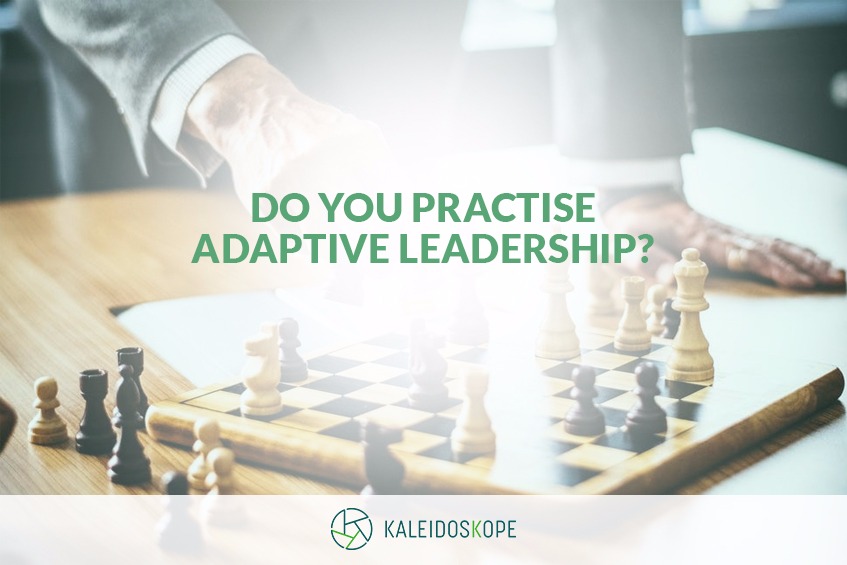
Business Storytelling – A Critical Skill For Great Leadership
You know how leaders are often called upon to be strong and decisive? Someone people can look up to, or who can motivate others to do their best. Someone who knows what it takes to succeed, and can take the rest of the team with them on the way to success.
But disruptions and transformations continue to take place at a breakneck pace–a scenario that Singapore is all to familiar with. As such, the burdens that leaders need to carry on their shoulders, and the weight of the decisions that they need to make, increase tenfold. This means that today, more than ever, organisations are calling on their leaders to be adaptive–a trait that can only be optimised through leadership training.
What is adaptive leadership? And why does everyone in your organisation need you to practise it? Find out as we also take a look at what adaptive leadership can do to help an organisation grow, and what you have to do to become an adaptive leader.
Not a Position, but a Practice
Adaptive leadership is a systematic approach to leading that allows leaders to respond to changes in a situation that could have a major impact on their organisations. It’s the approach, or the act of leading that takes centre stage, instead of the title a leader happens to have.
While researching at Harvard University, leadership experts Dr. Ronald Heifetz and Marty Linsky developed the adaptive leadership framework to show leaders how to get everyone—not just key decision-makers—involved in the problem-solving process.
These experts identified the kinds of problems organisations need to solve, and what leaders and their teams need to solve them. These problems or adaptive challenges are highly technical and often recurring problems that aren’t always well-defined or have clear-cut solutions.
Instead of merely coming up with solutions on their own and handing them over to staff to carry out, adaptive leaders facilitate collaboration that encourages contributions from staff as well as management to develop the solutions. By empowering everyone to act in becoming part of the solution, everyone becomes a leader in their own right.
Breaking Away with Business Agility
Because this practice breaks away from the traditional, hierarchical model of leadership, adaptive leadership may feel awkward or uncomfortable at first. But since many of the changes that today’s organisations have to deal with need a quick response, adaptive leadership gives them a framework for giving that response without having to go through bureaucratic red tape.
This is where you’ll find that adaptive leadership and business agility go hand in hand. Indeed, Adaptive Leadership: Accelerating Enterprise Agility author, Jim Highsmith, writes that an adaptive leader must develop an agile mindset.
With agility in mind, adaptive leadership can also be defined as a set of principles as well as practices that drive organisations to keep learning, which equips them with the capabilities for adapting and thriving in the face of change.
Among these practices is distinguishing the essential from the expendable and breaking away, again, from the status quo—if it means finding a better, more efficient way to do things and to solve problems. In so doing, the entire organisation and every individual in it will also be able to evolve slowly, but surely.
Organisations Need Adaptive Leadership
This evolution is precisely why organisations need adaptive leaders, because only the organisations that are able to respond effectively and efficiently to disruptions and other changes will survive and become profitable. Standard operating procedures or technical expertise just aren’t enough anymore for resolving problems or adaptive challenges.
With adaptive leadership, you create a whole new corporate culture that champions experimentation, discovery and innovation in problem solving. Team members acquire new skills and behavioural patterns alongside their managers as they take a renewed, more positive approach toward work.
Collaborating on a regular basis also enhances working relationships within teams, breaking down barriers commonly found in top-down corporate structures and enabling a free-flowing exchange of ideas. Seeing that their contributions are welcome and appreciated is also a real morale- and confidence-booster among the staff on any level.
Your teams readily turn failures as well as successes into opportunities for learning, which also include an awareness of industry trends and developments. By keeping close and constant tabs on what your target market is looking for, your organisation will be able to keep on providing better service and improving your bottom line.
Becoming an Adaptive Leader
Adaptive leadership as a leadership style isn’t acquired overnight, but you can start adopting the approach by taking note of what your organisation needs you to do whenever there’s an adaptive challenge to be faced.
- Assess the problem at hand. Take careful stock of what needs to be done, and keep on gathering and analysing data to inform your decisions even as you act. Get multiple interpretations of the issue to get a sense of how urgent or how soon you need to find a solution.
- Assess the people on hand. Take careful stock of who is capable and available to tackle the problem, including yourself. Just as important is taking note of who are affected by the issue, as well as the “default response” they may have in this situation.
- Ask for insights. Remember when we said that adaptive leadership was about getting everyone involved? Well, now is the time to do it. Discuss your findings and thoughts on everything you took stock of and get their perspectives of the issue before working together to find that solution.
- Promote the solution. Once you’ve collectively decided on what needs to be done, make sure everyone believes in the solution and has confidence in its efficacy. In inspiring your team or the entire organisation, make sure you’re delivering the right message in terms they can easily understand.
- Monitor and adjust as needed. Give the solution enough time to work while keeping an eye on how it’s working out for everybody. Be sure to take note of what worked and what didn’t, and to again involve everyone in gathering feedback and refining the solution.
In advocating the development of an adaptive or agile mindset, Highsmith says a leader must be open to change and be willing to explore and to create a vision. An adaptive leader must also know how to facilitate discussion and teamwork, and have the courage to view issues and possible solutions, even if they might seem to be contradictory.
We know that’s a lot to take in, but becoming the adaptive leader your organisation needs is possible with tailor-fit leadership training initiatives. Talk to us at Kaleidoskope to discover how you and your team can benefit from our Adaptive Leadership programme, today.
Leadership Training
- Business Storytelling – A Critical Skill For Great Leadership
- Want to make history as a leader? Try studying these great leaders from history
- Solution Focused Leadership Coaching
- Leading the Way for Leaders: How Your Leadership Can Continue to Evolve
- How to Manage a High-Performance Team Made Up of Different Personalities
- Have You Mastered the 4 Leadership Fundamentals?
- Do You Practise Adaptive Leadership? Your Organisation Needs You To
- Why A Good Leader Needs To Understand Business Agility
- 20 Qualities of a Good Leader in Times of Change (A Checklist)
Corporate Training
- Why is your training, boring?
- Learning Initiatives at Work CAN Lead to A Great ROI. Here’s How
- Corporate Training Doesn’t Seem to Be Working? You Need an HPLJ Approach!
Facilitation Training
- Facilitate a High Impact Training Course with Accelerated Learning
- Accelerative Learning – A Better Return on Training Investment (Part 1)
- Accelerative Learning – A Better Return on Training Investment (Part 2)
- Accelerative Learning – A Better Return on Training Investment (Part 3)
Virtual Learning
Start Your High-Performance Learning Journey
WITH KALEIDOSKOPE NOW!
Storytelling is essential to leadership—find out why as we discuss the anatomy of a story and what you need to become a good business storyteller.
Business Storytelling – A Critical Skill For Great Leadership

Who doesn’t love a good story?
Seriously. If you were in the shoes of your staff, and you had to listen to yourself talk about why you need to restructure so-and-so division or what your company intends to do about your new competitor, would you rather: Sit through half an hour of graphs and charts? Or 30 minutes of a spellbinding narrative?
Writing for the Business Times, Helmi Yusof relates how it’s become second nature for us to pay attention to, and appreciate stories. When told skilfully, the best stories are riveting, keeping listeners bent on tenterhooks until they find out what happens next, all the way up to a satisfying, if not always happy, ending.
In the capacity as a leader, you’ll often have to use words to explain, encourage, empower and evangelise—actions that take a whole lot more than dry data, a Powerpoint presentation, or impersonal instructions to get started.
To spur people into taking productive action on your explanation and encouragement, into using the power you’ve given them, and into believing in what you have to say, you can say it through masterful business storytelling.
Let’s take a look at what storytelling is, what storytelling is in the context of business, why leaders need to know how to tell a story, and some advice for boosting your business storytelling as a leadership skill.
Anatomy of a Story
Stories are facts, wrapped in context, and delivered with emotions.
Stories work because it’s concrete, for example, the language used is specific, and not abstract.
It’s memorable. Stories are often visual and convey emotions.
It’s impactful. Narrative is the oldest method of holding attention, human beings are “hard-wired” to listen to stories. Remember all those stories that your grandmother used to tell? I’ll bet you still remember a couple of those.
It’s credible. Stories use concrete examples. And examples way more powerful than facts.
So what makes a powerful business story?
It’s when it has a definitive time, and place marker. When a sequence of events lead to something happening. People’s names are mentioned. Dialogues happen. The unexpected happens, and finally there is a business point!

Becoming an Effective Business Storyteller
There are several reasons why leaders need to become better storytellers. Stories humanise a business and its brand, making them more relatable, engaging, impactful and memorable in the eyes of their audience. The more your audience is able to relate, respond to and remember your story, the more likely they will become loyal to your brand—particularly if they are given opportunities to take part in the story itself.
You might consider turning your brand story into an interactive, evolving saga—creating room for growth or new chapters written by your audience while staying true to your core storyline. Reflect on how many of the world’s best stories are created not just by one author but through collaboration, or are expanded upon by succeeding generations of writers.
A good story can help you differentiate yourself from the competition. If you should happen to tell a similar story to that of your competitor (after all, how many fairytales have a prince, a princess and a “happily ever after”?), your chances of standing out depend on how you tell your story.
Now, here are some ways to help you become a better business storyteller. (No, NEVER start with “once upon a time.)
1. Share a single story, or several.
Many business leaders already have the habit of telling an anecdote or two to illustrate a point, which is laudable insofar as the anecdote is relevant. You might share your short story at the start of your talk, or tell one every time something that needs a little reinforcement crops up.
But another way you might use this technique is to tell just one story. Begin your narrative at the start of your presentation, and lay the rest of the story out during the different parts of your talk, until you wrap the sequence up when the presentation ends.
Which leads us to the next point.
2. Build your story library.
Source for stories … your own stories, stories other people tell you, or from books, movies, TV.
Keep these handy by recording them down, and developing your personal storage system.
3. Learn the story.
Don’t try to learn the full story, rather, focus on capturing the key details, imagine it happening, and be clear what is the business point you want to hit home. And finally, practise, practise practise!
4. Know your audience.
There are different stories for different purposes and objectives. What do you need to achieve? Establish rapport, and make a good impression? Or do you need to introduce a new strategy or explain business decisions? Or do you need to influence the audience, or simply to share a success story?
Whatever the objectives, you need to be clear what you need to achieve from your audience.
Bear in mind that storytelling shouldn’t be formulaic, and that storytellers should be able to adapt to specific audiences and specific strategies and objectives.
5. Remember: It’s not about you.
Storytelling is about building a relationship between the storyteller and an audience. As a storyteller, you’re talking to your audience in order to reach them and get them to react.
Speakers who speak only about themselves, e.g. here’s what we can do, our capabilities, our track record, our resources, portfolio and so on—are bound to lose their audiences long before they make it to the punchline.
Focus your story about your audience, and they’ll be more likely to listen to what you have to say.
6. Get help if you need it.
Understand what makes a powerful business story, the different types of business stories, developing impactful business stories using the Story Framework, and how to sharpen your storytelling abilities from our master storyteller, Paul Stuart.
And here’s a parting thought:
“The shortest distance between two people is a story.”
At Kaleidoskope, we have programmes designed to help key decision makers like you hone their leadership skills and storytelling proficiency, particularly when making presentations. To start telling better business stories and becoming a master storyteller, get in touch with us, today.
Leadership Training
- Business Storytelling – A Critical Skill For Great Leadership
- Want to make history as a leader? Try studying these great leaders from history
- Solution Focused Leadership Coaching
- Leading the Way for Leaders: How Your Leadership Can Continue to Evolve
- How to Manage a High-Performance Team Made Up of Different Personalities
- Have You Mastered the 4 Leadership Fundamentals?
- Do You Practise Adaptive Leadership? Your Organisation Needs You To
- Why A Good Leader Needs To Understand Business Agility
- 20 Qualities of a Good Leader in Times of Change (A Checklist)
Corporate Training
- Why is your training, boring?
- Learning Initiatives at Work CAN Lead to A Great ROI. Here’s How
- Corporate Training Doesn’t Seem to Be Working? You Need an HPLJ Approach!
Facilitation Training
- Facilitate a High Impact Training Course with Accelerated Learning
- Accelerative Learning – A Better Return on Training Investment (Part 1)
- Accelerative Learning – A Better Return on Training Investment (Part 2)
- Accelerative Learning – A Better Return on Training Investment (Part 3)
Virtual Learning
Start Your High-Performance Learning Journey
WITH KALEIDOSKOPE NOW!
While the handful of leaders we discuss here are really not dealing with the corporate challenges, it’s still a relevant discussion. These leaders embody the paragons of the leadership qualities that are just as badly needed today as they were during their time.
Want to make history as a leader? Try studying these great leaders from history
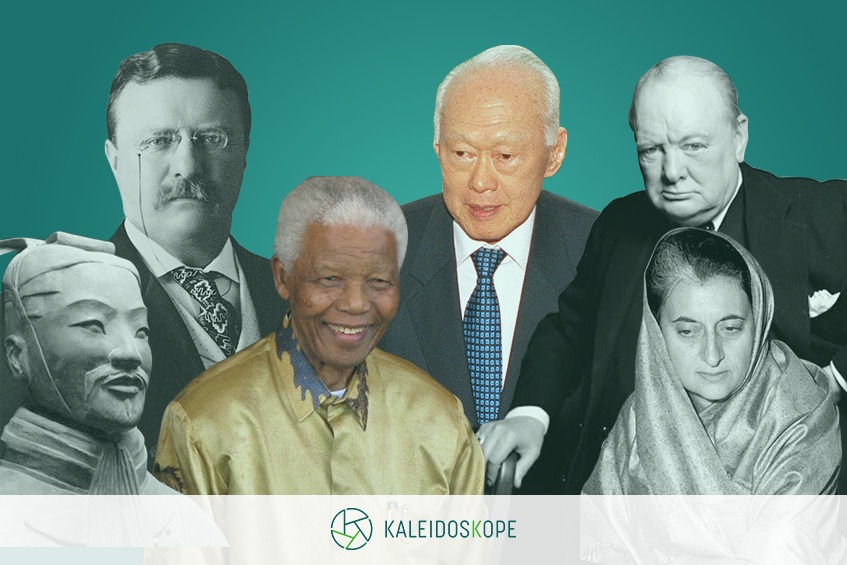
It’s true, it’s super tough being any sort of leader, these days. Business conditions are immensely volatile, the next tech development could be the one that puts your company out of business. Everyone on your team seems to have their own agenda, and nobody is ready to come to a consensus. Global warming is real, and the ice caps are melting in Alaska. And oh, they want to know what your next official statement will be on social media.
But if you think being a leader today is tough, try thinking about what leaders had to wrestle with back in the day, without the benefit of much hindsight, dealing with wars, natural disasters and without the technological support we have taken for granted nowadays. They didn’t have our guide either: a guide specifically for leaders.
While the handful of leaders we discuss here are really not dealing with the corporate challenges, it’s still a relevant discussion. These leaders embody the paragons of the leadership qualities that are just as badly needed today as they were during their time. See if you practise (or would like to practise) one or more of the types of leadership as one or more of these world leaders.

Sir Winston Churchill
What is our aim? I can answer in one word: It is victory.
As Britain’s Prime Minister in the 1940s and 50s, Winston Churchill has gone down in history as one of the foremost leaders during World War II. Morale was low among Britons during the war, but Churchill rallied them with his now legendary communication skills, and kept things going with his indefatigable resolve to fight back against the Nazis.
Stand-out communication skills are typical of the democratic type of leadership, although prior to his successes in the Second World War, Churchill exhibited more qualities belonging to the autocratic leadership type. These qualities, which involve not consulting others and steamrolling over all other opinions, led to many mistakes.
Leaders are humans too! They commit their fair share of errors, and Churchill’s decisions at Gallipoli in Turkey, and in Ireland cost thousands of lives. But even these mistakes remain instructive to today’s business leaders. Data mustn’t be ignored or taken out of context when making crucial decisions.
These, coupled with the fact that he had no place for other points of view (Admiral John Fisher) also led to disastrous decisions in World War I. What probably saved us all was his willingness to admit these were mistakes, an unstoppable faith in his own ability, and an iron resolve and drive to move on. And as we all know, the rest was history.
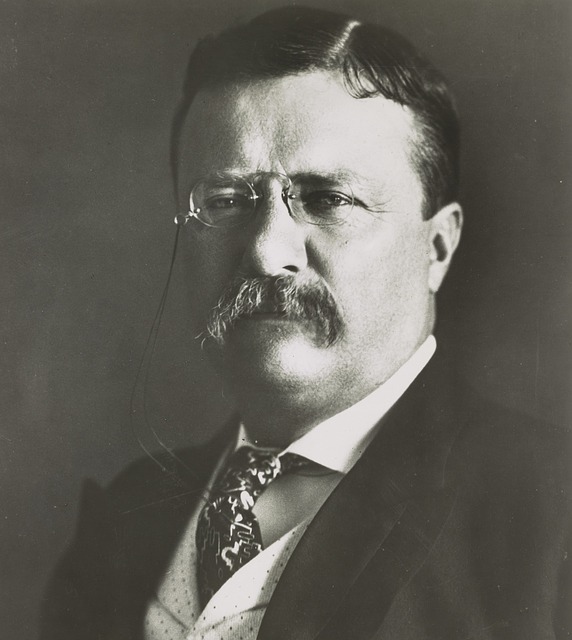
Theodore Roosevelt
The best executive has sense enough to pick good people.
The 26th and youngest ever US President in 1901, Theodore “Teddy” Roosevelt is also considered one of the greatest and most beloved American leaders. Roosevelt’s presidency is characterised by action, and KPIs: it broke up over 40 monopolies, promoted the conservation of nature, and fought corruption in government offices.
His support for the construction of the Panama Canal has been cited as an example of the Laissez-faire type of leadership. This is team leadership, a conscious decision to delegate tasks, and empower his team members. It meant he trusted his team to do their jobs well!
Roosevelt was open to working with different kinds of people, even if he didn’t see eye to eye with them. He leveraged strengths and complemented weaknesses, to build a cohesive whole working toward the realisation of a vision.
Rossevelt was open to diversity of views in his team. He appreciated different points of view, leveraging on different perspectives, and trusted his team enough to delegate and power. In doing so, he harnessed the power of the team to create magic.
Sun Tzu
A leader leads by example, not by force.
Chinese military general and war leader Sun Tzu is best known for authoring The Art of War. While little else is known about him other than his being born in Ch’i State around 500 BC, many business leaders continue to take their cue from his writings. These writings started becoming popular in Europe in the 1700s, and in the US some 200 years later.
If the type of leader Sun Tzu was may be inferred from what he wrote, he might be said to have exemplified coaching leadership. This leadership style focuses on the team member. He takes an in-depth interest and understanding of his team members, and is focused on building everyone to their peak performance. Sun Tzu says “you have to believe in yourself” and “know yourself and you will win all battles”.
In relation to this, Sun Tzu says you need to be humane, or know how to relate to your team members as individual human beings, not mere minions to perform a task. Treat your team members as family, as you would your own children, and focus on nurturing, and understanding their individual circumstances. Believe in them, guide them, coach them as you believe they are capable of coming up with their own solutions.
Sun Tzu was first and foremost a strategist, so it’s natural that he exhibited traits of the strategic type of leadership. These leaders focus on crafting strategies that creates high performance in their teams. They leverage on their in-depth understanding, and analysis of each team member, gracefully, and effectively moving each part to fit into the bigger picture of their strategy.
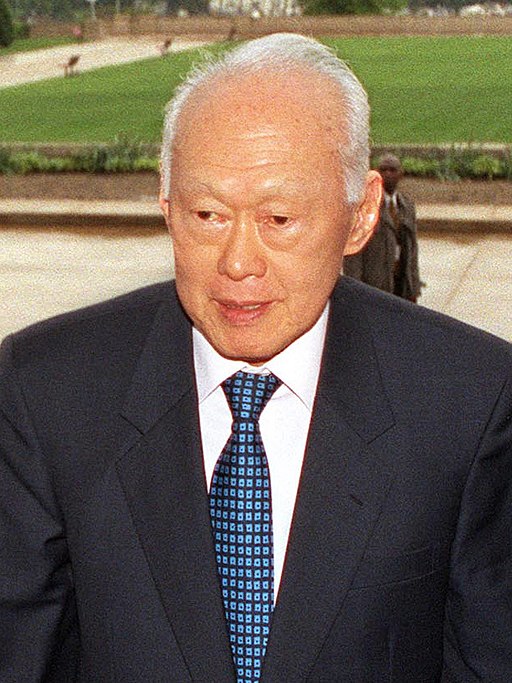
Lee Kuan Yew
A leader without the vision, to strive to improve things, is no good.
The founding father of modern Singapore and the country’s first Prime Minister, Lee Kuan Yew faced the challenges of a nascent republic head-on with his characteristic no-nonsense approach to nation-building. Thanks to his unshakeable resolve, the country has come to take pride of place in the regional and global economy, where it remains to this day.
During his three decades of leadership, Lee Kuan Yew encouraged racial harmony and foreign investments, drove infrastructure development, strengthened the country’s military and successfully eradicated corruption in the government.
As a textbook example of the autocratic type of leadership, Lee Kuan Yew brooked little opposition from his political rivals or the press. It may be reasoned that the prevailing political climate at the time of his rise to power necessitated such strong-willed and decisive action. He may also be seen to embody transformational leadership for driving large-scale, progressive change, as well as visionary leadership, secure, and unstoppable in his vision for a country that not many people share, or can even imagine.
Among the many, vividly demonstrated leadership lessons that business leaders stand to learn from Lee Kuan Yew for generations to come, perhaps the most salient is to never let anything distract you from the fulfilment of your vision. Though he was often criticised for being dictatorial, he stayed his course and masterfully orchestrated the transformation of his country in a single lifetime.
Indira Ghandi
For they who serve their country, nothing is impossible.
India’s third, and first, only female Prime Minister, Indira Ghandi served two terms beginning in 1966, and again in 1980 until her assassination in 1984. While her administration was plagued by controversy and was enforced at times by dubious means, her determination and single-minded dedication to serving her country continues to inspire people around the world today.
Despite significant personal problems and constant criticism, Mrs Ghandi brought India to recognition on the global stage. Her firm, skillful handling, and mastery of foreign policy, particularly involving the tricky situations in Pakistan and Bangladesh in the 1970s, and her work with the Non-Alignment Movement in the 1980s were major contributions to peace in the region.
Also in spite of being described as cold, aloof, or even rude in private, the public Mrs Ghandi may be said to exemplify the charismatic type of leadership. The leader’s unique personality is brought to bear on the leadership style or approach. She was much admired for her unwavering tenacity, and remarkable will and ambition to build a strong and dynamic India.
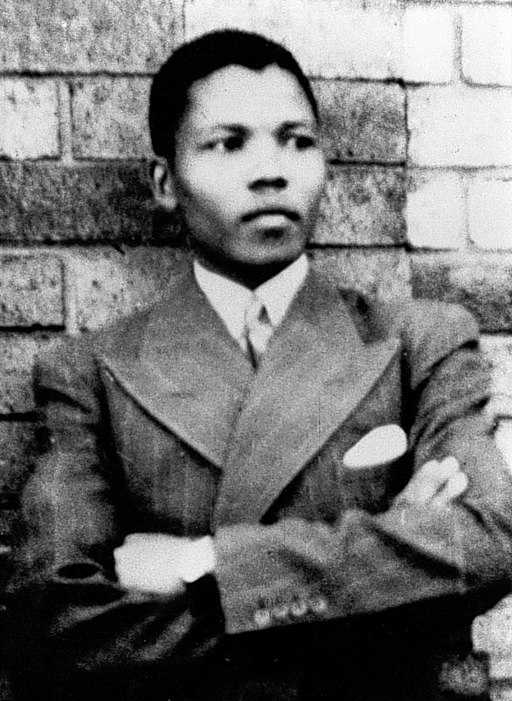
Nelson Mandela
Lead from the back—and let others believe they are in front.
South Africa’s first democratically elected president, Nelson Mandela is celebrated around the world for his fight against apartheid and emerging from his 27-year imprisonment for the cause with the spirit of forgiveness and reconciliation. A Nobel Peace Prize winner in 1993, he was the archetype of the soft-spoken yet authoritative negotiator he became in his later years.
Like all of us humans, Mandela’s career was often dogged by fodder for critics. His early days in politics favoured armed struggle as a means of achieving racial equality, and his time in office saw the gap between the nation’s rich of both races and the poor continue to widen. Yet, his struggles to do right by all of his people continue to shine through.
Apart from being a sterling example of the cross-cultural type of leadership, “Madiba” was clearly also a transformational and visionary type of leader. He clearly has given his entire life to driving real change, and it is probably in this leader, Madiba, who most exemplifies resilience in the face of challenges.
How will you mark your leadership style in this millennium?
While we may not be battling challenges on the international stage, we are all leaders in our own teams, our organizations, and in our little eco- systems.
Let the leadership and coaching trainers at Kaleidoskope help you become the type of leader you want to be, as well as the leader your organisation needs. Ask us about our leadership training programmes, today.
Leadership Training
- Business Storytelling – A Critical Skill For Great Leadership
- Want to make history as a leader? Try studying these great leaders from history
- Solution Focused Leadership Coaching
- Leading the Way for Leaders: How Your Leadership Can Continue to Evolve
- How to Manage a High-Performance Team Made Up of Different Personalities
- Have You Mastered the 4 Leadership Fundamentals?
- Do You Practise Adaptive Leadership? Your Organisation Needs You To
- Why A Good Leader Needs To Understand Business Agility
- 20 Qualities of a Good Leader in Times of Change (A Checklist)
Corporate Training
- Why is your training, boring?
- Learning Initiatives at Work CAN Lead to A Great ROI. Here’s How
- Corporate Training Doesn’t Seem to Be Working? You Need an HPLJ Approach!
Facilitation Training
- Facilitate a High Impact Training Course with Accelerated Learning
- Accelerative Learning – A Better Return on Training Investment (Part 1)
- Accelerative Learning – A Better Return on Training Investment (Part 2)
- Accelerative Learning – A Better Return on Training Investment (Part 3)
Virtual Learning
Start Your High-Performance Learning Journey
WITH KALEIDOSKOPE NOW!
In Parts 1 and 2, we looked at the different types of learning story, introduced the concept of Accelerative Learning, explored the history of AL, how it is defined and the key principles for designing an AL program.
Accelerative Learning – A Better Return on Training Investment (Part 3)

In Parts 1 and 2, we looked at the different types of learning story, introduced the concept of Accelerative Learning, explored the history of AL, how it is defined and the key principles for designing an AL program. In Part 3, we look at the AL cycle, how AL shows up in the classroom and the delivery approach, content design and benefits of an AL program.
The Accelerative Learning Cycle
When designing and facilitating an AL program, the AL cycle provides a broad but flexible template that helps ensure that all the principles of AL are met. The Accelerative Learning Cycle consists of the following five phases (Kinnard 2007):
- Learner Preparation Phase:
This involves prework designed to engage the learners minds and hearts before they actually arrive at the session. It prepares the learners for what is to come and makes it real.
- Connection Phase:
This involves consciously designing the program to allows participants to connect with the content at many different levels: intellectual, emotional and at times physically. It is the phase where the facilitator makes the most “boring” of subjects come to life.
- Creative Presentation Phase:
In this phase new material is presented, or learners are allowed to discover and develop new information in interactive, creative and memorable ways using mixed media and different structured learning methods.
- Activation Phase:
Here, learners begin to use the new information in a controlled and structured way using games and small group or whole group activities that are fun and meaningful. At this point, the facilitator is handing off the baton as learners’ competency increases.
- Integration Phase:
This phase brings the session to a close. It allows learners to transfer the learning to their lives through personal and group reflection and feedback and the development of ongoing learning commitments.
How does AL show up in the classroom?
Classroom environment:
Creating the right classroom environment is crucial to an effective AL training session. The classroom setting needs to be colourful, comfortable and naturally stimulating. It needs to feel like fun; designed to help the participants relax and eliminate whatever uncertainty, stress or learning barriers they may come in with. The setting needs to be collaborative and mutually supportive.
This can be created by careful room set up, using cabaret style layout, choosing a room with natural light, using colourful table throw overs, providing table toys, using bright image-based content and peripheral posters and the skilful use of music.
Delivery approach:
The delivery approach needs to be learner-centred as opposed to teacher-centred. The AL facilitator needs to be skilled in:
- Using open-ended questions to create and hold discussion
- Active listening to ensure all participants are engaged and heard
- Attending to their own nonverbal communication to energise the session and support the learning process
- Observing the participants, inferring what they are up to and taking action to keep the learning on track.
Content and material:
Content needs to be designed to appeal to all three of the learning modalities; audio, visual and kinaesthetic. This requires a skilful blend of speaking, written content, posters and images, video, music, and activities involving group discussion, games and physical engagement. Time also needs to be built into the session for contemplation and reflection to allow the learning to be processed and assimilated by the participants.
What are the benefits of Accelerative Learning?
AL is effective because it actively engages learners in driving their own learning. People leave an AL training session having had fun, feeling engaged and excited and ready to implement what they have learned in the workplace. It is a total system for speeding and enhancing both the design and learning processes that provides a consistently high level of return on any training investment.
In the words of Gary Schornack, “Our challenge as instructors is to help the student learn more faster, easier, with greater retention. Accelerated learning is the method, and it is fun for both the instructor and student. We can help our students become world-class experts and gurus in our field if we are willing to change our thinking on how our students learn.”(Schornack 1996)
If you’d like to apply Accelerative Learning to training events at your own organisation, talk to us at Kaleidoskope, today.
Sources and References:
Bathla, Som (2018). “The Magic of Accelerated Learning: Discover Strategies for Effective Learning, Improved Memorisation, Sharpened Focus and Become an Expert in Any Skill You Want”
Conners, K (2018). “Accelerated Learning: Advanced Strategies for Improved Memorisation, Effective Listening and Increased Productivity”
Kinnard, Karen (2007). “The Accelerated Learning Cycle: Are You Ready to Learn? Am I Ready to Lead?“
Labiosa, Libyan; Atkisson, Alan (1996). “Accelerated Learning – The value of playing games, singing songs, listening to stories and how learning is improved by the power of suggestion”
Labiosa, Libyan; Randig, Sinéad; Cassone, Philip (2018). “The Accelerative Learning Road Less Travelled”
McKeon, Kevin J. (1995). “What is this Thing Called Accelerated Leaming?” Training and Development Journal, Vol. 49, No. 6.
Nitsche, Pearl (2017). “Nonverbal Classroom Management – Group Strategies that Work”
Schornack, Gary (1996). “Accelerated Learning Techniques for Adults – An Instructional Design Concept for the Next Decade”
Smith, Alastair (2016). “Accelerated Learning in Practice”
Wilkens, Jonathan (2017). “Accelerated Learning: Accelerated Learning Techniques, Memory Techniques, Improve Your Memory, Learn More in Less”
Zemke, Ron (1995). “Accelerated Leaming: madness with a method,” Training and Development Journal, Vol. 32, No. l 0
Additional Information:
(CAL 2019). The Center for Accelerated Learning – Click here to learn more
(ICAL 2019). International Centre for Accelerative Learning (ICAL) – Click here to learn more
(Administrate 2018). Administrate Group – Visit blog on how the World spent 359B on trainings
(Watson 2013). CCW Consulting LLC – Click here to learn more
Leadership Training
- Business Storytelling – A Critical Skill For Great Leadership
- Want to make history as a leader? Try studying these great leaders from history
- Solution Focused Leadership Coaching
- Leading the Way for Leaders: How Your Leadership Can Continue to Evolve
- How to Manage a High-Performance Team Made Up of Different Personalities
- Have You Mastered the 4 Leadership Fundamentals?
- Do You Practise Adaptive Leadership? Your Organisation Needs You To
- Why A Good Leader Needs To Understand Business Agility
- 20 Qualities of a Good Leader in Times of Change (A Checklist)
Corporate Training
- Why is your training, boring?
- Learning Initiatives at Work CAN Lead to A Great ROI. Here’s How
- Corporate Training Doesn’t Seem to Be Working? You Need an HPLJ Approach!
Facilitation Training
- Facilitate a High Impact Training Course with Accelerated Learning
- Accelerative Learning – A Better Return on Training Investment (Part 1)
- Accelerative Learning – A Better Return on Training Investment (Part 2)
- Accelerative Learning – A Better Return on Training Investment (Part 3)
Virtual Learning
Start Your High-Performance Learning Journey
WITH KALEIDOSKOPE NOW!
In Part 1, we looked at the different types of learning story and introduced the concept of Accelerative Learning. In this post we explore the history of Accelerative Learning, how it is defined and the key principles of designing an AL program.
Accelerative Learning – A Better Return on Training Investment (Part 2)

In Part 1, we looked at the different types of learning story and introduced the concept of Accelerative Learning. In this post we explore the history of Accelerative Learning, how it is defined and the key principles of designing an AL program.
Where did Accelerative Learning come from?
The father of AL is the Bulgarian psychiatrist Dr. Georgi Lozanov. Dr Lazanov’s initial work in the 1960s was called “Suggestopedia”. He discovered that creating a positive and supportive learning environment that puts people into a state of “relaxed alertness” had a significant impact on learning outcomes (Smith 2006).
Dr. Lazonov’s work was built upon by Dr. Evelyn Gateva with Curriculum and Instructional Design; Libyan Labiosa Cassone who coined the term Accelerative Learning; Professor Stephen Krashen with Language Acquisition; Dr. Roger Sperry’s brain research (awarded the Nobel Prize in Physiology and Medicine in 1981); Professor Howard Gardner with Multiple Intelligences; Professor Marian Diamond and the Enriched Learning Environment and Professor James Asher with Total Physical Response.
Other contributions over the years have included Tony Buzan’s work on memory, Brandler and Grinder’s work on Neuro-Linguistic Programming, Czikszentmihalyi’s work on human fulfilment and flow among many others.
It is a long lineage of research bringing AL to the powerful multi-method, multimedia learning technique that it is today.
How is Accelerative Learning defined?
Accelerative Learning, also known as Accelerated Learning in the corporate world, is defined as “a method of instruction that provides an atmosphere where students are able to absorb and retain concepts by overcoming traditional barriers of learning” (McKeon 1995). It is a combination of neuroscience, cognitive psychology and instructional design which involves training facilitators, creating content and developing material (Labiosa 1996).
What are the principles of Accelerative Learning?
So how does it work? AL training is designed and delivered around a number of key principles which can be summarised as follows (CAL 2019):
1. Learning involves the whole of the body and mind
The learning approach is designed to engage the learner’s body, senses, creativity and emotions and not just the “head” centred rational and verbal consciousness.
2. Learning is created and not consumed
The learner actively creates knowledge as opposed to absorbing it. This is not a passive process of sitting and listening but an active process of integrating new knowledge and skills into the learners’existing structure of self.
3. Collaboration facilitates learning
Research indicates that creating competition between learners slows learning down whereas creating collaboration speeds it up. People often learn more by interacting with peers than by any other means. Creating collaboration is a central tenet of any AL program.
4. Learning takes place on many different levels simultaneously
The brain does not work sequentially, in a linear way but is a parallel processor which thrives when challenged to do many things at once. AL engages people on many different levels simultaneously; using all the receptors, senses and pathway it can to bring the learning into the person’s full brain and body system.
5. Learning comes from doing and feedback
Information learned in isolation, without a frame of reference, is quickly forgotten. By ensuring Immediate practical application of knowledge, or learning by doing, AL provides the brain with the context and frame of reference for long term retention. AL also provides time for immersion, feedback, reflection and re-immersion to lock learning in.
6. Positive emotions greatly improve learning
Learning that is associated with negative emotional states such as stress, frustration, discomfort or boredom is quickly left behind. By actively creating feelings of relaxation, fun and engagement, AL creates a higher quality of learning and retention.
7. The image brain absorbs information instantly and automatically
The human nervous system is a far more powerful image processor than it is a word processor. Images are easier to process, understand and retain than verbal abstractions. By translating verbal content into images of all kinds, AL makes training content faster to learn and easier to remember.
In Part 3, we look at the AL Cycle for success, how AL shows up in the classroom and the delivery approach, content and benefits of an AL program. If you have questions about anything you’ve read so far, ask us here.
Sources and References:
Bathla, Som (2018). “The Magic of Accelerated Learning: Discover Strategies for Effective Learning, Improved Memorisation, Sharpened Focus and Become an Expert in Any Skill You Want”
Conners, K (2018). “Accelerated Learning: Advanced Strategies for Improved Memorisation, Effective Listening and Increased Productivity”
Kinnard, Karen (2007). “The Accelerated Learning Cycle: Are You Ready to Learn? Am I Ready to Lead?“
Schornack, Gary (1996). “Accelerated Learning Techniques for Adults – An Instructional Design Concept for the Next Decade”
Smith, Alastair (2016). “Accelerated Learning in Practice”
Wilkens, Jonathan (2017). “Accelerated Learning: Accelerated Learning Techniques, Memory Techniques, Improve Your Memory, Learn More in Less”
Zemke, Ron (1995). “Accelerated Leaming: madness with a method,” Training and Development Journal, Vol. 32, No. l 0
Additional Information:
(CAL 2019). The Center for Accelerated Learning
(ICAL 2019). International Centre for Accelerative Learning (ICAL)
(Administrate 2018). Administrate Group – Click here to learn how the world spent 359B on trainings
(Watson 2013). CCW Consulting LLC –Click here to visit
Leadership Training
- Business Storytelling – A Critical Skill For Great Leadership
- Want to make history as a leader? Try studying these great leaders from history
- Solution Focused Leadership Coaching
- Leading the Way for Leaders: How Your Leadership Can Continue to Evolve
- How to Manage a High-Performance Team Made Up of Different Personalities
- Have You Mastered the 4 Leadership Fundamentals?
- Do You Practise Adaptive Leadership? Your Organisation Needs You To
- Why A Good Leader Needs To Understand Business Agility
- 20 Qualities of a Good Leader in Times of Change (A Checklist)
Corporate Training
- Why is your training, boring?
- Learning Initiatives at Work CAN Lead to A Great ROI. Here’s How
- Corporate Training Doesn’t Seem to Be Working? You Need an HPLJ Approach!
Facilitation Training
- Facilitate a High Impact Training Course with Accelerated Learning
- Accelerative Learning – A Better Return on Training Investment (Part 1)
- Accelerative Learning – A Better Return on Training Investment (Part 2)
- Accelerative Learning – A Better Return on Training Investment (Part 3)
Virtual Learning
Start Your High-Performance Learning Journey
WITH KALEIDOSKOPE NOW!
This blog post is the first of three posts on Accelerative Learning (AL) theory. In Part 1, we look at the different types of learning story and introduce the concept of Accelerative Learning.
Accelerative Learning – A Better Return on Training Investment (Part 1)

This blog post is the first of three posts on Accelerative Learning (AL) theory. In Part 1, we look at the different types of learning story and introduce the concept of Accelerative Learning.
The learning story (Part 1)
Picture the scene. A presenter is at the front of the room, 40 minutes into a session about ethical compliance obligations, literally talking to his 35th PowerPoint slide. There are a few people at the front fighting to stay awake, most are on their phone or tablet and one or two at the back are literally nodding off. The presenter speeds up in a bid to get it over and done with. At the end of the session, there is muted applause and a collective rush for the door. The company can tick the box on ethics training – but did anyone really learn anything? A day or two later and most of the participants probably won’t even remember having been in the room and will determine to avoid the next session like the plague.
Unfortunately, this scene is playing out in corporate meeting rooms every day all over the world and it begs the question, what’s the point? If people are leaving training sessions, going back to work and continuing to do the same things in the same way as they did before they went in, then it really is just a waste of time and money. It is estimated that businesses worldwide spend $350B each year on training (Administrate 2018), not including the cost of participant hours. What percentage of that spend is really having a material impact?
It doesn’t have to be like this. There are tried and tested learning approaches that can and do increase learning effectiveness, ensuring a significant return on a company’s investment in training. One particularly powerful, well researched and documented approach is Accelerative Learning (AL).
What is Accelerative Learning (AL)?
Accelerative Learning (AL) has been described as the most advanced teaching and learning method in use today (CAL 2019). It is a powerful approach based on over 50 years of brain research, designed to enhances both the training design and the learning process. When applied correctly, it has been proven to significantly increase learning effectiveness whilst saving time and money.
Based on the way that human beings naturally learn, AL taps into our innate potential for learning in a way that traditional learning methods cannot. It does this by fully involving the participant in their own learning experience using physical activity, creativity, colour, images, music and the whole training environment.
AL is described as activity-based and learner-driven (ABLeD), where learners discover and create their own knowledge through meaningful activities and authentic experience. The trainer becomes “the guide on the side” as opposed to “the sage on the stage” (CWW 2013), facilitating the learning process and delivering content only to supplement the learners’ own process of discovery and creation.
The learning story (Part 2)
Picture the scene with the application of AL. Three groups of participants have been busily discussing a scenario where a company employee is facing an ethical dilemma that looks like it could be in breach of the law. They’ve studied the legislation, figured out the relevant clauses, prepared their feedback and are about to present. The brief requires the first group to feedback with a poster and no words; the second group has to create a song; and the third group has to act it out. The room is tense with excited anticipation…
They leave the room not only having actively studied the content but also having seen, heard and felt it through the media of three different learning modalities. In the process, they have built relationships, broken down barriers, had a lot of fun and are ready to take what they have learned back to the workplace and sign up for the next session.
In Part 2, we explore the history of Accelerative Learning, how it is defined and the key principles for designing an AL program. If youhave questions about anything you’ve read so far, ask us here.
Sources and References:
Bathla, Som (2018). “The Magic of Accelerated Learning: Discover Strategies for Effective Learning, Improved Memorisation, Sharpened Focus and Become an Expert in Any Skill You Want”
Conners, K (2018). “Accelerated Learning: Advanced Strategies for Improved Memorisation, Effective Listening and Increased Productivity”
Kinnard, Karen (2007). “The Accelerated Learning Cycle: Are You Ready to Learn? Am I Ready to Lead?“
Labiosa, Libyan; Atkisson, Alan (1996). “Accelerated Learning – The value of playing games, singing songs, listening to stories and how learning is improved by the power of suggestion”
Labiosa, Libyan; Randig, Sinéad; Cassone, Philip (2018). “The Accelerative Learning Road Less Travelled”
McKeon, Kevin J. (1995). “What is this Thing Called Accelerated Leaming?” Training and Development Journal, Vol. 49, No. 6.
Nitsche, Pearl (2017). “Nonverbal Classroom Management – Group Strategies that Work”
Schornack, Gary (1996). “Accelerated Learning Techniques for Adults – An Instructional Design Concept for the Next Decade”
Smith, Alastair (2016). “Accelerated Learning in Practice”
Wilkens, Jonathan (2017). “Accelerated Learning: Accelerated Learning Techniques, Memory Techniques, Improve Your Memory, Learn More in Less”
Zemke, Ron (1995). “Accelerated Leaming: madness with a method,” Training and Development Journal, Vol. 32, No. l 0
Additional Information:
(CAL 2019). The Center for Accelerated Learning – blog for center for accelerated learning
(ICAL 2019). International Centre for Accelerative Learning (ICAL) – visit for more information
(Administrate 2018). Administrate Group – Click here to learn How the World spent 359 Billion on trainings
(Watson 2013). CCW Consulting LLC – learn more about consulting
Leadership Training
- Business Storytelling – A Critical Skill For Great Leadership
- Want to make history as a leader? Try studying these great leaders from history
- Solution Focused Leadership Coaching
- Leading the Way for Leaders: How Your Leadership Can Continue to Evolve
- How to Manage a High-Performance Team Made Up of Different Personalities
- Have You Mastered the 4 Leadership Fundamentals?
- Do You Practise Adaptive Leadership? Your Organisation Needs You To
- Why A Good Leader Needs To Understand Business Agility
- 20 Qualities of a Good Leader in Times of Change (A Checklist)
Corporate Training
- Why is your training, boring?
- Learning Initiatives at Work CAN Lead to A Great ROI. Here’s How
- Corporate Training Doesn’t Seem to Be Working? You Need an HPLJ Approach!
Facilitation Training
- Facilitate a High Impact Training Course with Accelerated Learning
- Accelerative Learning – A Better Return on Training Investment (Part 1)
- Accelerative Learning – A Better Return on Training Investment (Part 2)
- Accelerative Learning – A Better Return on Training Investment (Part 3)
Virtual Learning
Start Your High-Performance Learning Journey
WITH KALEIDOSKOPE NOW!
Start Your High-Performance Learning Journey
with Kaleidoskope NOW!
Call Us Or Message Us on Whatsapp
Or Fill Out the Form Below




